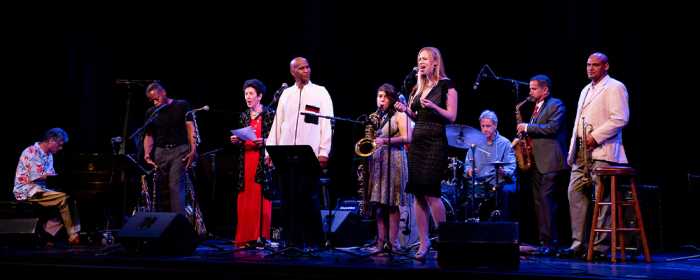Seeking Proposals For Green Conversion
Mayor Michael R. Bloomberg announced the release of a request for proposals (RFP) to build a state-of-the-art facility to convert waste to clean energy as part of PlaNYC, the city’s longterm sustainability agenda.
The RFP asks private sector firms to submit plans for a pilot facility using reliable, cost-effective, sustainable and environmentally sound waste to clean energy technology, which will help the city meet its goal of doubling the amount of waste diverted from landfills, as Bloomberg committed to doing in January’s State of the City speech.
The facility must be located in New York City or within 80 miles of the city and would begin by processing a maximum of 450 tons of waste per day-the city currently processes approximately 10,000 tons of waste per day. The city will not provide any capital funding for the proposed facility and will pay a per ton fee to the operator of the facility.
The city is seeking only the cleanest and latest waste-to-energy tech- nologies, and the RFP specifically excludes conventional incineration or “mass burn” proposals.
“We have the most comprehensive sustainability program in the nation to green our city, but we have go further,” said Bloomberg. “New Yorkers generate more than 10,000 tons of solid waste every day and too of it ends up in landfills. Using less, and recycling more are the most effective ways to address the problem, but this project will help us determine if some of that waste can be converted to safe, clean energy to meet the city’s growing power needs.”
“There are technologies that have proven to be a success in countries around the world, and right here in New York City, we’re already converting sewage to clean energy that powers the treatment process,” said Deputy Mayor for Operations Caswell Holloway. “Converting solid waste to clean energy is the next logical step. Any proposal will have to pass rigorous environmental and community scrutiny to move forward, and we hope that as many vimuch able proposals as possible are submitted for consideration.”
“The request for proposals for the development of a new and emerging solid waste management technology facility at a site in or near the city marks a significant step towards a more sustainable solid waste disposal policy for the City and complements our expanded recycling and com- posting efforts,” said Sanitation Commissioner John J. Doherty. “By implementing such a facility in the region, we will reduce the amount of waste we need to landfill, the distances we need to travel to disposal sites and total emissions into the environment.”
“Innovation is the key to achieving a greener, greater New York, and the waste-to-energy solicitation makes good environmental and economic sense,” said David Bragdon, director of the Office of Long-term Planning and Sustainability. “With the release of this RFP, we’re opening a door to improving how we meet the City’s needs, while working toward the air quality, climate change, energy and solid waste goals outlined in the Mayor’s sustainability agenda, PlaNYC.”
Proposals to build and operate the conversion facility are due by June 5. If the initial pilot is successful, the facility will be expanded to process 900 tons of waste per day.
The city will evaluate proposals based on the company’s experience with the proposed technology, the quality of their technical proposal and environmental compliance data and the commitment to environmental justice and community outreach plans.
New tech under consideration
As part of the Comprehensive Solid Waste Management Plan approved by vote of the City Council in 2006, the city has evaluated several new and emerging conversion technology facilities that use technologies such as anaerobic digestion, gasification, hydrolysis and other processes to cleanly convert waste into energy.
These technologies are in wide commercial use internationally, including in Europe and Asia, and are being operated on a pilot basis in North America. The solicitation seeks proposals that use these and similar technologies, and excludes conventional “mass burn” waste to energy or conventional refuse derived fuel technologies.
Extensive environmental review
The RFP requires companies to provide detailed environmental data to be provided, including extensive emissions performance data and greenhouse gas reduction data that furthers PlaNYC’s goal of reducing citywide greenhouse gases by 30 percent and achieving the cleanest air of any U.S. city by 2030. The Department of Health and Mental Hygiene will evaluate all emissions data.
The selection of a clean conversion technology facility will follow the environmental justice approach established in the city’s Comprehensive Solid Waste Management Plan, by ensuring borough equity in the siting of solid waste infrastructure.
Proposals for a conversion technology facility must include a public participation plan with meaningful opportunities for public involvement throughout the planning, approval, implementation, construction, testing and operation phases of the facility. Proposers also must include information regarding the location of municipal and solid waste management facilities and pollution sources in the vicinity of the site. This information will help inform the city’s evaluation of proposals.
The siting, construction and operation of the conversion facility will undergo extensive environmental and community oversight, including a city Environmental Quality Review and state Environmental Quality Review, as well as approvals from the state Department of Environmental Conservation.
The Department of Sanitation currently collects more than three million tons of waste per year from residences and institutions and spends more than $300 million to export- primarily via truck traffic-the waste to landfills and facilities outside the of the city.
Residential and institutional solid waste creates 728,000 metric tons of greenhouse gas emissions annually, much of which is attributable to methane generation from landfills that receive our waste. The new Waste Reduction Plan will double the amount of waste the city diverts from landfills from 15 percent to 30 percent by 2017.
The plan contains a variety of initiatives to increase waste diversion, with two-thirds of these gains to come from increased waste reduction, reuse, composting and recycling initiatives, including the future expansion of the city’s curbside recycling program to additional plastics, expanding the number of public space recycling bins on city streets and providing new locations for residents to compost food waste.



































